What to do in Central Vietnam?
Central Vietnam is a region full of history, culture, and stunning landscapes. It is home to ancient cities, beautiful beaches, and incredible natural wonders. Unlike the bustling energy of the South or the rugged mountains of the North, Central Vietnam offers a perfect balance between history, adventure, and relaxation. You can explore the royal heritage of Hue, admire the caves of Phong Nha, enjoy the beaches and modern attractions of Da Nang, and experience the charm of Hoi An’s ancient streets.
If you're wondering what to do in Central Vietnam, this guide will take you through the must-visit destinations and the best experiences in each place. Whether you're interested in history, nature, or simply soaking in the local culture, you will find something to love in this fascinating region.
A bit about Central Vietnam
Central Vietnam is a region that stretches along the country’s narrowest part, bordered by the sea to the east and mountains to the west. It includes provinces such as Quang Binh, Quang Tri, Thua Thien Hue, Da Nang, Quang Nam, and Ninh Thuan, among others. Some of the most famous destinations in the region are Phong Nha-Ke Bang National Park, Hue, Da Nang, and Hoi An, each with its own beauty.
Compared to Northern Vietnam, with its dramatic mountains, ethnic cultures, and cooler climate, Central Vietnam is home to beautiful beaches, historical sites, and national parks. And unlike the humid and tropical South, Central Vietnam experiences more distinct weather patterns, with dry and wet seasons that can significantly affect travel plans.
Central Vietnam is the perfect if you love culture, history, nature, and beaches. It’s also just a train ride from Hanoi or a short flight from Ho Chi Minh City.
What to do in Central Vietnam
Phong Nha
Phong Nha is a paradise for nature lovers and adventure seekers. It is located in Quang Binh Province, inside Phong Nha-Ke Bang National Park, a UNESCO World Heritage Site. This area is famous for its massive limestone mountains, lush jungles, and some of the most spectacular caves in the world.
If you love caves, you cannot miss Phong Nha Cave, Paradise Cave, and Dark Cave. Phong Nha Cave is easy to explore by boat, while Paradise Cave will amaze you with its giant rock formations. Dark Cave is for those who enjoy adventure. You can kayak through the river, walk inside the cave, and even take a mud bath.
For a truly unforgettable experience, you can trek to Hang En or the world-famous Son Doong Cave. Hang En is one of the largest caves in the world, and you can camp inside it. Son Doong, the largest cave on the planet, is an expensive but once-in-a-lifetime experience.
Phong Nha is not just about caves. You can go biking through the countryside, swim in crystal-clear rivers, or visit the lovely rural villages. The Botanic Garden and Mooc Spring are great places to relax and enjoy nature. If you have time, visit Duck Stop, where you can have fun feeding ducks and experience local farm life.
After a day of adventure, Phong Nha town is a great place to unwind. It is small but has friendly guesthouses, cozy cafés, and a few good restaurants. The atmosphere is peaceful, and you will feel far away from the busy cities of Vietnam.
Hue
Hue was once the imperial capital of Vietnam and remains one of the most historically rich cities in the country. It is famous for its ancient palaces, royal tombs, and traditional cuisine. The city is quieter than Hanoi or Ho Chi Minh City, but it has a charm that makes it special.
Imperial City
The Imperial City is the most important historical site in Hue. It was the seat of the Nguyen Dynasty for over a century. The complex is surrounded by high walls and a moat, with palaces, temples, and courtyards inside. Walking through the ruins, you can imagine how the emperors lived and ruled. Some parts are beautifully restored, while others show the scars of war, giving the place a mix of grandeur and mystery.
Tombs of the Nguyen Emperors
Hue is known for its royal tombs, where the Nguyen emperors were buried. Each tomb has its own design, reflecting the personality of the ruler. The most famous ones are:
Minh Mang Tomb: surrounded by lakes and gardens, this tomb is peaceful and elegant.
Khai Dinh Tomb: with Vietnamese and European architecture, decorated with beautiful mosaics.
Tu Duc Tomb: a romantic and poetic tomb built like a small palace, where the emperor used to relax.
Thien Mu Pagoda
Sitting on a hill overlooking the Perfume River, Thien Mu Pagoda is the most famous pagoda in Hue. The seven-story tower is an icon of the city. The temple is still active, and you might see monks praying or meditating. The river view from the pagoda is peaceful, making it a perfect place to relax and enjoy the scenery.
Perfume River and Boat Ride
The Perfume River flows through Hue, adding to the city’s poetic beauty. Taking a boat ride at sunset is one of the best things to do. You can admire the city from the water and stop at different sites along the river. If you visit during the autumn season, you might notice a natural fragrance coming from the flowers that fall into the river, which is how it got its name.
Dong Ba Market
If you want to experience local life, Dong Ba Market is the place to go. This busy market sells everything from fresh produce to traditional handicrafts. It is also a great place to try Hue’s famous food. Some must-try dishes are:
Bun Bo Hue: a hearty bowl of spicy beef noodle soup.
Banh Beo: small steamed rice cakes topped with shrimp and crispy pork skin.
Nem Lui: grilled pork skewers served with rice paper and peanut sauce.
Danang
Da Nang is a dynamic city that offers modern attractions, natural wonders, and cultural sites. It is known for its long beaches, scenic mountains, and impressive bridges. Unlike Hue and Hoi An, which focus on history and tradition, Da Nang is a fast-growing city with a more modern feel. However, it still has plenty of cultural and natural beauty to explore.
My Khe Beach
My Khe Beach is one of the most famous beaches in Vietnam. It stretches for several kilometers with soft white sand and clear blue water. Many people come here to swim, sunbathe, or try water sports like surfing and jet skiing. It is also a great place to relax, especially in the early morning or late afternoon when the weather is cooler. The beach is well-maintained, and there are plenty of restaurants and cafes nearby where you can enjoy fresh seafood.
Marble Mountains
The Marble Mountains are a group of five limestone hills just outside the city. Each mountain is named after a natural element: water, wood, fire, metal, and earth. The main one, Thuy Son (Water Mountain), is the most popular to visit. You can climb up the stone steps to explore caves, temples, and viewpoints. From the top, you get an incredible view of Da Nang and the coastline.
Golden Bridge & Ba Na Hills
The Golden Bridge is one of the most famous landmarks in Vietnam. It is a pedestrian bridge held up by two giant stone hands, giving it a unique and surreal appearance. The bridge is located in Ba Na Hills, a hilltop amusement park with European-style architecture, gardens, and entertainment. The cable car ride to Ba Na Hills is one of the longest in the world and offers breathtaking views of the mountains and forests below. While the theme park itself can feel a bit artificial, the views and the Golden Bridge make it a worthwhile visit.
Son Tra Peninsula & Linh Ung Pagoda
Son Tra Peninsula, also known as Monkey Mountain, is a green escape from the city with winding coastal roads and panoramic views. It is home to the famous Linh Ung Pagoda, which has a 67-meter-tall Lady Buddha statue overlooking the sea. The area is peaceful and offers some great viewpoints where you can see the entire coastline. If you're lucky, you might even spot rare langurs (a type of monkey) in the trees.
Dragon Bridge & Han River at Night
Da Nang is known for its impressive bridges, and the most famous one is the Dragon Bridge. At night, the bridge is lit up with changing colors, and on weekends, it breathes fire and water at 9 PM. Walking along the Han River in the evening is a great way to enjoy the city lights. There are also river cruises available if you want a different perspective of the skyline.
What to Eat in Da Nang
Da Nang is famous for fresh seafood and local specialties. Some of the best dishes to try include:
Mi Quang: a noodle dish with turmeric-infused broth, shrimp, pork, and crispy rice crackers.
Banh Xeo: crispy Vietnamese pancakes filled with shrimp, pork, and bean sprouts, served with fresh herbs.
Bun Cha Ca: fish cake noodle soup, a favorite among locals.
Da Nang is a city that has something for everyone. Whether you want to relax on the beach, explore mountains and temples, or enjoy modern attractions, you will find plenty to do. The city is also a great base for visiting nearby destinations like Hoi An and Hue, making it an essential stop on any Central Vietnam trip.
Hoi An
Hoi An is one of the most beautiful and well-preserved ancient towns in Vietnam. Unlike Da Nang, which is modern and lively, Hoi An offers a quieter, more atmospheric experience. Walking through the old town, you’ll see a mix of Chinese, Japanese, and French influences in the buildings, reflecting its history as a major trading port.
Hoi An Ancient Town
The heart of Hoi An is its Ancient Town, a UNESCO-listed area with well-preserved houses, temples, and shops. The streets are traffic-free, making it a great place to walk around and take photos. Some highlights:
The Japanese Covered Bridge: One of the most famous landmarks in Hoi An, built in the 16th century by Japanese merchants.
Old Merchant Houses: Such as the Tan Ky House, where you can see traditional Vietnamese-Chinese architecture.
Fujian Assembly Hall: A colorful Chinese temple dedicated to the goddess of the sea, built by the Fujian community.
At night, the town transforms with thousands of lanterns glowing along the streets and the river, creating a magical atmosphere. The Night Market along the Thu Bon River is a great place to buy souvenirs and try local street food.
Thu Bon River & Boat Rides
The Thu Bon River runs through Hoi An, and taking a boat ride is one of the best ways to experience the town. You can choose a traditional wooden boat and enjoy the view of the lantern-lit town in the evening. If you want a more interactive experience, you can join a fishing tour with locals or take part in a bamboo basket boat ride in the nearby coconut forests.
Tra Que Vegetable Village
Just outside Hoi An, Tra Que Village is a peaceful place where locals grow organic herbs and vegetables. Here, you can learn about traditional farming techniques and even try your hand at planting or watering crops. Many tours offer a cooking class, where you can use fresh ingredients from the garden to prepare local dishes like Banh Xeo (Vietnamese pancake) and spring rolls.
My Son Sanctuary
For history lovers, My Son Sanctuary is a must-visit. Located about an hour from Hoi An, this site was once the religious center of the Champa Kingdom, dating back over 1,500 years. The red brick temples are surrounded by jungle, giving it a mysterious and ancient feel. Though some structures were damaged during the war, the site remains an important cultural landmark. Visiting early in the morning is the best way to avoid crowds and enjoy the peaceful atmosphere.
An Bang Beach & Cua Dai Beach
If you want to relax by the sea, An Bang Beach is the best option near Hoi An. It has golden sand, clear water, and beachfront restaurants where you can enjoy fresh seafood. Unlike Da Nang’s beaches, An Bang and Cua Dai have a more laid-back vibe.
Tailor Shops & Shopping in Hoi An
Hoi An is the best place in Vietnam to get custom-made clothing. There are hundreds of tailor shops, and you can have a suit, dress, or even shoes made in just a couple of days. The town is also famous for its handicrafts, including handmade leather goods, lanterns, and ceramics.
What to Eat in Hoi An
Hoi An has a unique food scene, with dishes you won’t find elsewhere. Some must-try foods include:
Cao Lau: a noodle dish with pork, crispy croutons, and fresh herbs, made with water from a special well in Hoi An.
White Rose Dumplings: delicate shrimp dumplings topped with crispy shallots.
Banh Mi Hoi An: one of the best versions of Vietnam’s famous baguette sandwich, filled with meat, pate, and fresh vegetables.
How long do you need in Central Vietnam?
The ideal amount of time to explore Central Vietnam depends on your travel style and what you want to see. If you want to visit the main highlights, a week (7 days) is perfect. This gives you time to explore Phong Nha, Hue, Da Nang, and Hoi An without feeling rushed.
3 to 4 days: You can visit either Hue and Hoi An or Da Nang and Hoi An. This works if you’re short on time but still want to experience the culture, beaches, and history.
5 to 7 days: You can cover Phong Nha, Hue, Da Nang, and Hoi An, which allows you to enjoy nature, historical sites, and beaches at a good pace.
10+ days: If you want to go deeper, you can spend more time trekking in Phong Nha-Ke Bang National Park, exploring local villages, or relaxing on Central Vietnam’s beautiful beaches.
For most travelers, 5 to 7 days is the best balance between sightseeing and relaxation.
Best time to visit central Vietnam
The best time to visit Central Vietnam is from February to August when the weather is warm and dry. However, the ideal time depends on your priorities:
February to May: This is the best time for sightseeing in Hue, Da Nang, and Hoi An. The temperature is comfortable, with little rain, making it great for outdoor activities and exploring ancient sites.
June to August: This is the best time for beaches, especially in Da Nang and Hoi An. The weather is hot, and the skies are clear, making it perfect for swimming and water activities. However, it can be crowded with domestic tourists.
September to January: This is rainy season, especially from October to December, when Hue and Hoi An experience heavy rains and possible flooding. Phong Nha caves may also close temporarily due to rising water levels. If you visit during this time, be prepared for unpredictable weather.
For the best experience, visit between February and May, when you can enjoy good weather for both sightseeing and outdoor activities.
Conclusion
This region is one of the most rewarding places to explore, and now that you know what to do in Central Vietnam, it's time to experience it for yourself. If you want to make the most of your trip and experience these destinations with local insights, booking a tour can be the best option. A well-planned itinerary will ensure you visit the highlights, discover hidden gems, and fully immerse yourself in the beauty of Central Vietnam. Start planning your adventure today and experience the magic of this incredible region!
>>> Central Vietnam 1 Week Itinerary: Highlights Destinations
>>> Hoi An And Da Nang by Jeep Tours
Send us your comments about : What to do in Central Vietnam?
Required fields *
You might also be interested
Travel ideas
Need some inspiration? Discover some of the best tours in Vietnam, which are highly appreciated by our clients. An excellent starting point to help you choose the right trip to Vietnam, Laos, Cambodia, Burma or Thailand, whether you are traveling alone, as a couple, as a family or with friends.
And because this trip is yours, feel free to customize it as you wish!
Vietnam Cambodia Itinerary 14 Days
Hanoi – Hoa Binh – Mai Chau – Ninh Binh – Halong bay – Hue - Danang – Hoian – Saigon – Ben Tre - Can Tho – Saigon - Siem Reap Angkor - Tonlé Sap - Siem Reap – Ta Prohm - Departure
Vietnam 14 Day Itinerary
Vietnam 14-day itinerary covers the country’s top highlights and quintessential experiences for an unforgettable journey.
Honeymoon Tour Pakcages In Vietnam 12 Days
Saigon Arrival - City Tour – Mekong Delta – Danang – Hoian - by flight - Da Nang – Hanoi - by flight – Halong - overnight on junk – Departure
Authentic Hoang Su Phi Trekking Tours
Hoang Su Phi trekking tours take you to stunning terraces, meet few tourists, connect with locals and enjoy authentic culture.
Best Nha Trang Beach Tour 4 Days
Saigon/Hanoi – Nha Trang relaxation – Saigon/Hanoi – Departure
Mekong Delta Bike Tour Itinerary 7 Days
Cycle through the Mekong Delta in 7 days, discovering floating markets, orchards, craft villages, and tranquil green islands.
Are you interested in this tour?



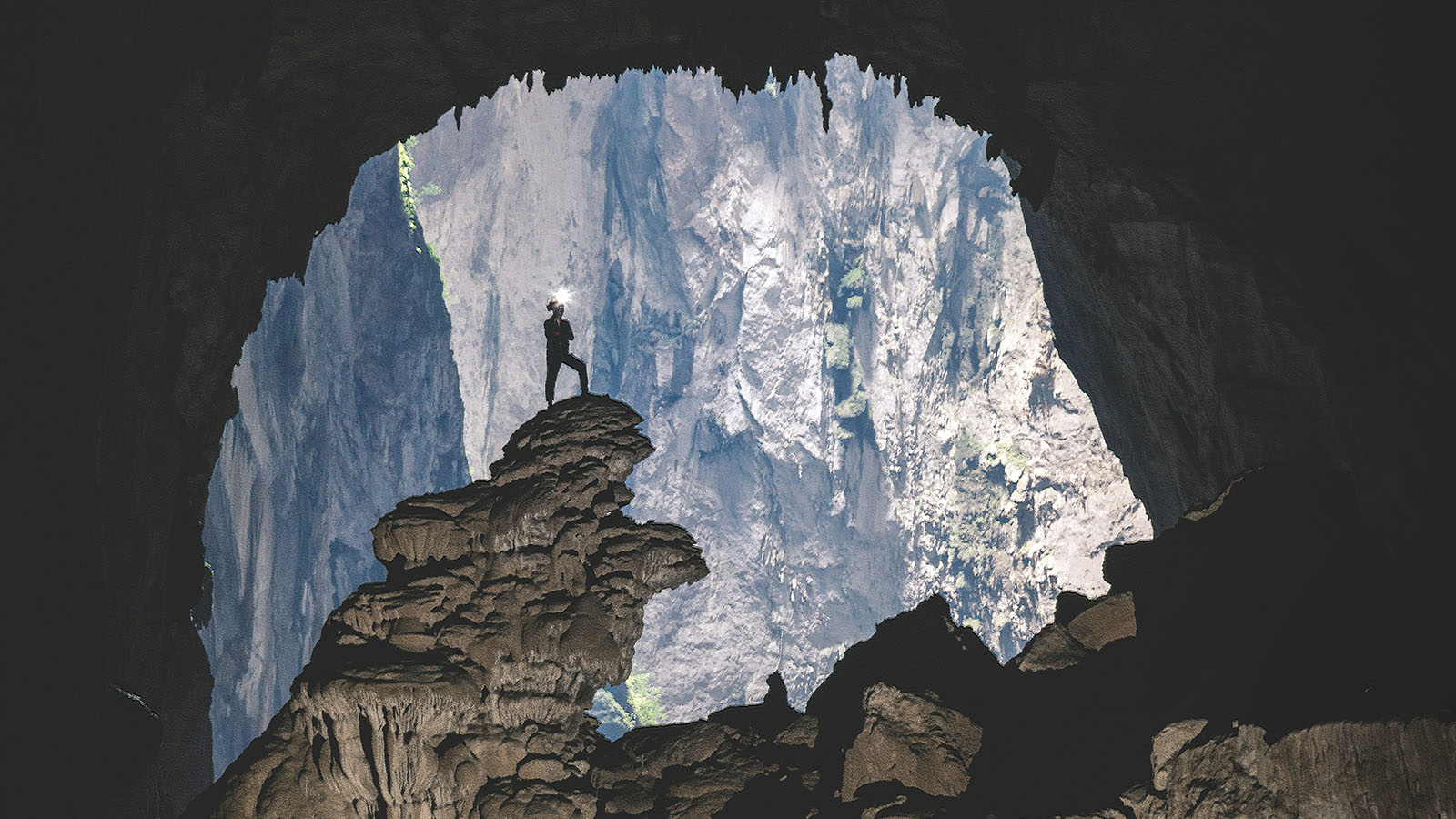




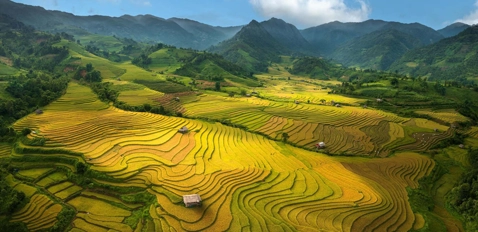

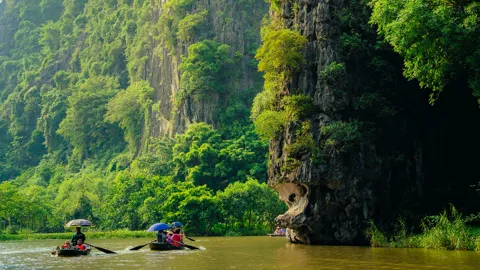



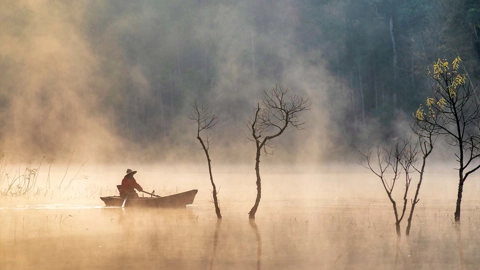







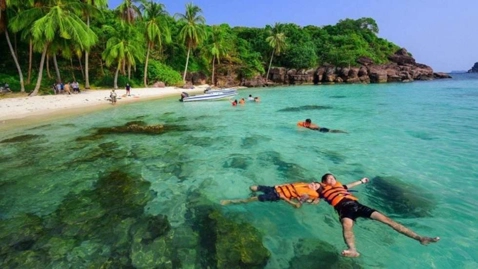













Comment